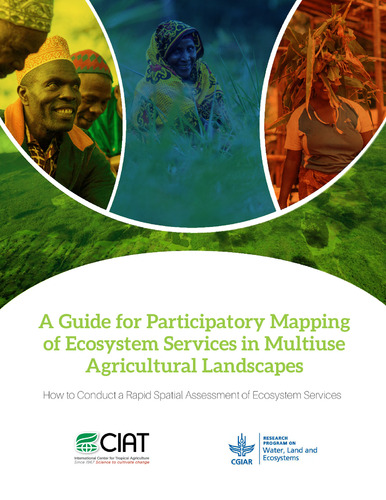A Guide for participatory mapping of ecosystem services in multiuse agricultural landscapes: How to conduct a rapid spatial assessment of ecosystem services
Abstract
This guide presents a step-by-step approach in using a participatory mapping method with community members to rapidly identify and map ecosystem services and changes in their supply across multiuse agricultural landscapes. Nongovernmental organizations (NGOs), government agencies and researchers can use this approach to learn from communities about how they use and access natural resources. This activity uses a landscape approach to help land management practitioners understand the ways in which people depend on and access ecosystem services and how changes in their availability impact livelihoods across the landscape.
The mapping exercise involves using free, high resolution satellite imagery from Google Earth Pro, which presents an aerial view of the community in fine detail. Participants from the community in question identify key features on the map, which help them to understand the extent of the area the map represents. They are then led through a discussion on their resources such as water, livestock, cultivated land and uncultivated land. Through the discussion participants identify: (1) where resources are located on the landscape and how they are used; (2) changes in the supply of resources and how these changes are impacting livelihoods; and (3) restrictions to access, conflicts over use and management of each resource in question. Mapping with different groups, such as men, women and youth can show which resources are most important to different groups as well as differences in access and perceptions of change. The mapping exercise is intended to take between two and a half and three hours: including introductory and concluding discussions can add on another two hours.
This guide presents examples and tips from mapping exercises that tested this approach in Ghana, Kenya, Malawi and Tanzania. We outline how this mapping exercise could be used in research, development and planning. Additionally, this guide includes appendices that contain: (1) a detailed explanation of how to create maps for each activity; (2) a set of materials that have been developed to accompany the mapping exercise; (3) steps for digitizing the maps (4) case study examples; and (5) additional sources of information.

